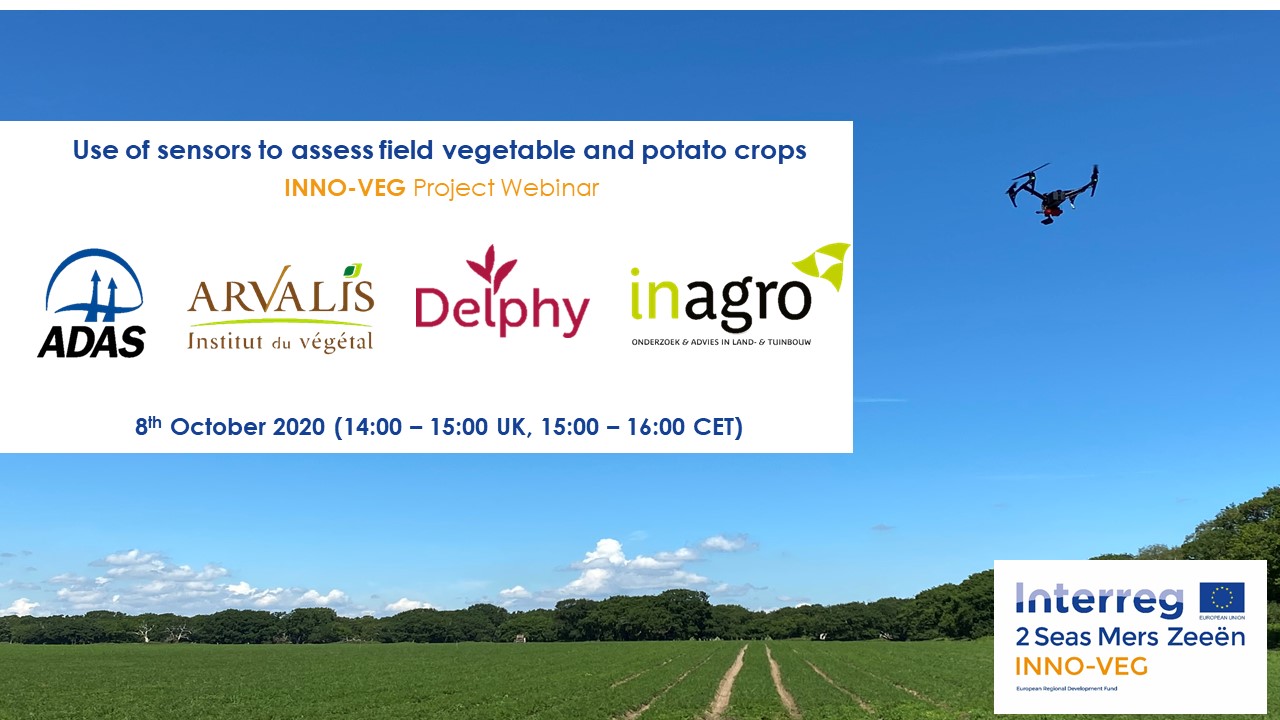Webinar: crop sensing
05 November 2020 by Admin

On October 8th 2020 the INNO-VEG project hosted a webinar focusing on the different sensor types and vegetation indices used within the project. Speakers included Lizzie Sagoo from ADAS (UK), Gies Van Den Daele from Inagro (Belgium), Hans Moggre from Delphy (The Netherlands) and Jean-Pierre Cohan from ARVALIS – Institut du vegetal (France).
The INNO-VEG project aims to increase the speed and uptake of innovation in the field vegetable and potato sectors. The project is collecting data to evaluate the suitability of using crop sensing data to carry out measurements in field experiments, explained Lizzie Sagoo. This year, the project has used crop reflectance data to assess treatment differences in 14 field scale experiments across the UK, France, The Netherlands and Belgium.
Gies Van Den Daele explained the main differences in sensor types (multispectral, hyperspectral) and sensor platforms (hand held, tractor mounted, drone mounted) available, and introduced the sensors used in the INNO-VEG project. Hans Moggre went on to explain the seven different vegetation indices used in the project, why they were chosen and advantages and disadvantages of each. The suitability of a specific vegetation index can depend on the crop, the point in the growing season and the characteristic of interest.
An important question when comparing data collected from different sensors is what impact small differences in wavebands used by multispectral sensors have on the vegetation indices calculated. Jean-Pierre Cohan explained how the project has built a virtual ‘sensor simulator’ to answer this question and inform future work in the project. Vegetation indices which use the red-edge band were shown to be most sensitive to individual sensor specifications.
A recording of the webinar is now available in the videos section of the project website which you can access by clicking here.
The slides presented in the webinar can be downloaded here


